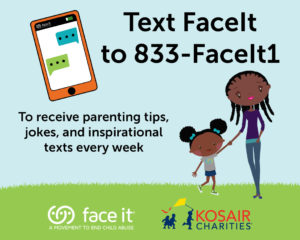
19 Oct Domestic Violence Awareness Month: Supporting Children and Caregivers Experiencing Violence in the Home
Blog by: Tonya Jernigan, LCSW, Social Worker Principal, University of Kentucky Pediatric Forensic Medicine, Image courtesy of Unsplash.com
There is a peace that we feel walking into the safety of our homes after a long day at work or school; a respite from the stress, the chaos, the noise of the world. Sadly, many people living in Kentucky do not find the safe space they long for; instead, terror reigns inside the walls of their home. You may already know that Kentucky, for the third year in a row, has the highest rate of child maltreatment in the nation. But, did you know that Kentucky also has nearly double the national rate of homes with child maltreatment and intimate partner violence occurring simultaneously? Kentucky homes are not safe for many of its adults or its children.
 We know from years of research on adverse childhood experiences (ACES) that witnessing a parent being hurt or abused is traumatic for a child and can lead to negative outcomes throughout the lifespan. Children cannot feel safe when the person who is responsible for their safety is being harmed. The adults in the home are there to provide a safe space for children, to be the calm in their world, which right now feels upside down for many children across the Commonwealth.
We know from years of research on adverse childhood experiences (ACES) that witnessing a parent being hurt or abused is traumatic for a child and can lead to negative outcomes throughout the lifespan. Children cannot feel safe when the person who is responsible for their safety is being harmed. The adults in the home are there to provide a safe space for children, to be the calm in their world, which right now feels upside down for many children across the Commonwealth.
We cannot have well and safe children without well and safe caregivers. Advocates, those who work in child maltreatment and those who work in intimate partner violence, must work together to create peace and safety in Kentucky’s homes. We must find ways to both protect children and avoid blaming victims of intimate partner violence. If we cannot do this, we create barriers that may prevent families from accessing our services. So, how do we do this? How do we support these families? How do we keep children safe and the caregivers in their lives safe? Here are a few ideas.
- If you work primarily with adult victims of intimate partner violence, educate yourself on signs of child maltreatment. A good place to start is with the TEN-4 rule. Not only can you educate yourself, but also parents of children who may be concerned that their child is being hurt.
- Meet the advocates and professionals in your community who do the other side of the work. Child maltreatment and intimate partner violence are not happening in a vacuum, and safety in Kentucky’s homes cannot be created by only those working with children or adults. We are all on the same team – the peace in Kentucky’s homes team.
- If you work primarily in the field of child maltreatment, educate yourself on the many reasons victims of intimate partner violence “don’t just leave.” Learn about coercive control.
- Practice empathy. Listen to caregiver’s stories, notice the actions they were able to take to promote safety and the barriers they face in deciding to leave that may be different than your own.
We all have a role to play in making Kentucky’s homes safe for every child and adult and the challenges to creating safety may not be easily overcome. But, the challenges seem less insurmountable when we are all working together, supporting children and their caregiver who may be experiencing intimate partner violence. As my seven-year-old tells me frequently, “team work makes the dream work.” And, this dream I have of every Kentuckian finding safety in the walls of their home, can become a reality when we all put our heads together to support victims of child maltreatment and victims of intimate partner violence.




